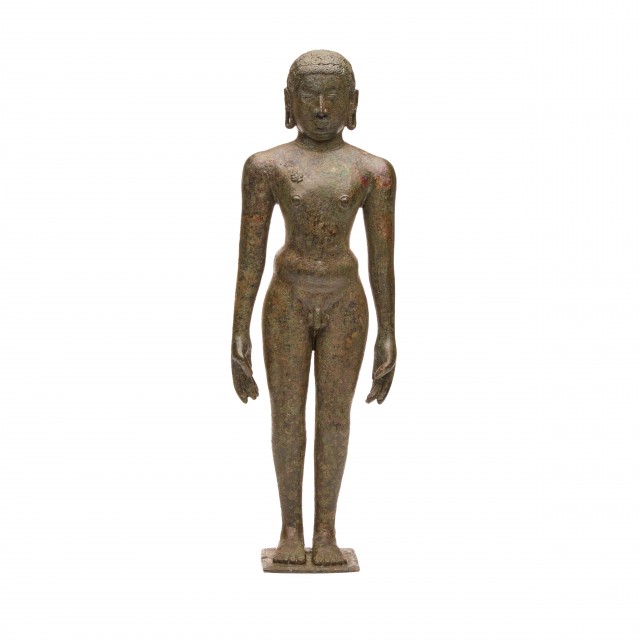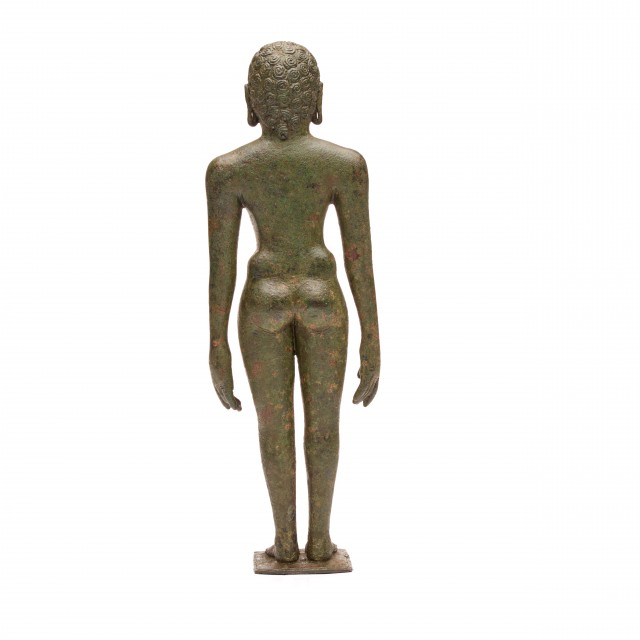Tirthankara

Digital image © Asia Society

Digital image © Asia Society
Tirthankara
7th-early 8th century
Tamil Nadu, India
Copper alloy
H. 10 1/2 x W. 3 1/2 x D. 3 1/2 in. (26.7 x 8.89 x 8.89 cm)
Asia Society, New York: Mr. and Mrs. John D. Rockefeller 3rd Collection, 1979.11
Provenance
John D. Rockefeller 3rd, New York, NY; acquired from J. J. Klejman, New York, NY, November 6, 1963.
The Asia Society, New York, NY, bequest of John D. Rockefeller 3rd, New York, NY, 1979.
Licensing inquiries
The twenty-four principal adepts and teachers of the Jain religion are known as tirthankaras ("ford-makers") or jinas ("victors"). This jina's idealized body, with its broad shoulders and elongated arms, is similar to that of Buddhist and Hindu deities and denotes advanced spiritual development. The nakedness of this image indicates that it belongs to the Digambara or "sky-clad" sect of Jainism, the more austere of the two primary branches of the religion. The small leaf-like mark (shrivasta) on the upper right of the chest, an auspicious mark which signifies a jina's superhuman qualities, may have been intended to distinguish this jina from the other twenty-three, although the figure cannot be identified without further information. The off-center position of the shrivasta is typical of south Indian jina images.


